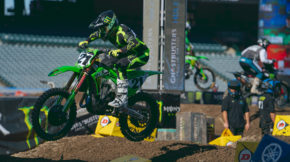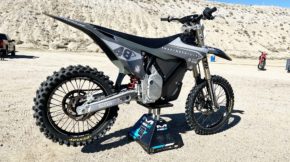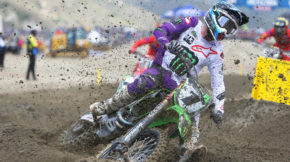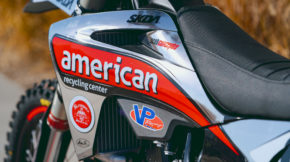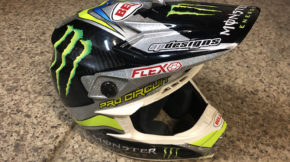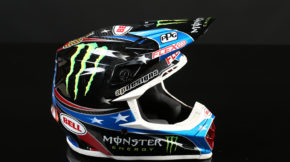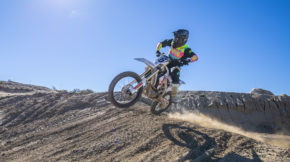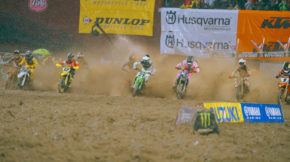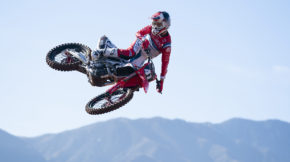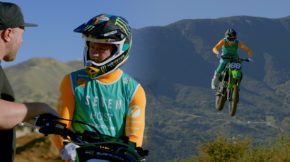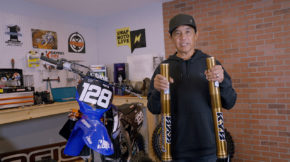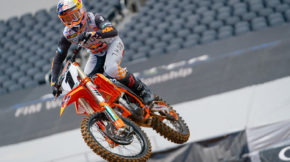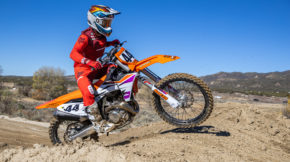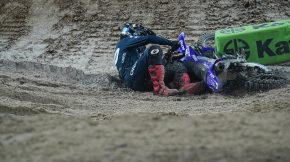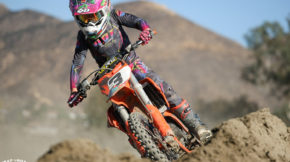Testing Yamaha’s New Wabash Power-Assist Gravel Bicycle
Share
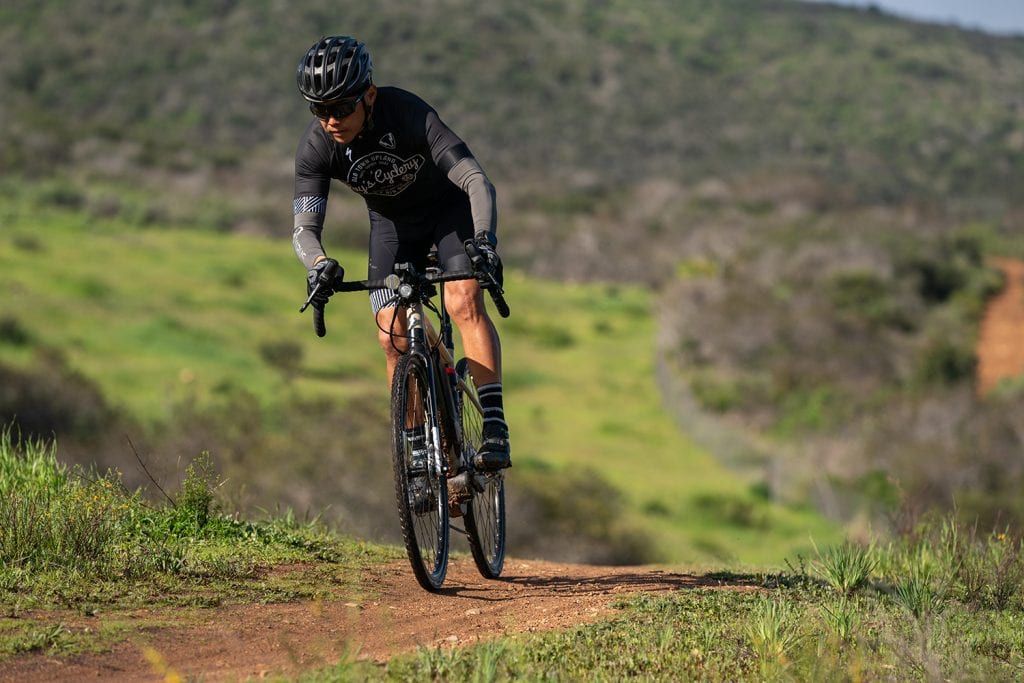 Yamaha’s New Wabash Pedal-Assist Gravel Bicycle
Yamaha’s New Wabash Pedal-Assist Gravel Bicycle
Price: $3499
Pedal-assist bicycles have been a hot topic in mountain biking in recent years, as the undeniable new trend in cycling is being greeted with resistance from purists who refuse to understand the technology and overall benefits of the e-bike revolution. While we’re not here to fuel the fires of debate between traditionalists and pedal-assist supporters, we will say that at Swapmoto Live we have wrapped our heads around the technology after some initial skepticism. Our initial ride on a pedal-assist mountain bike three years ago was eye opening, and in the time since we have used them to introduce new riders to the sport of cycling, have been able to ride with companions who might normally not be able to join us (elderly, physically impaired, or simply out of shape), and have gone exploring in places that might not be accessible on a conventional mountain bike.
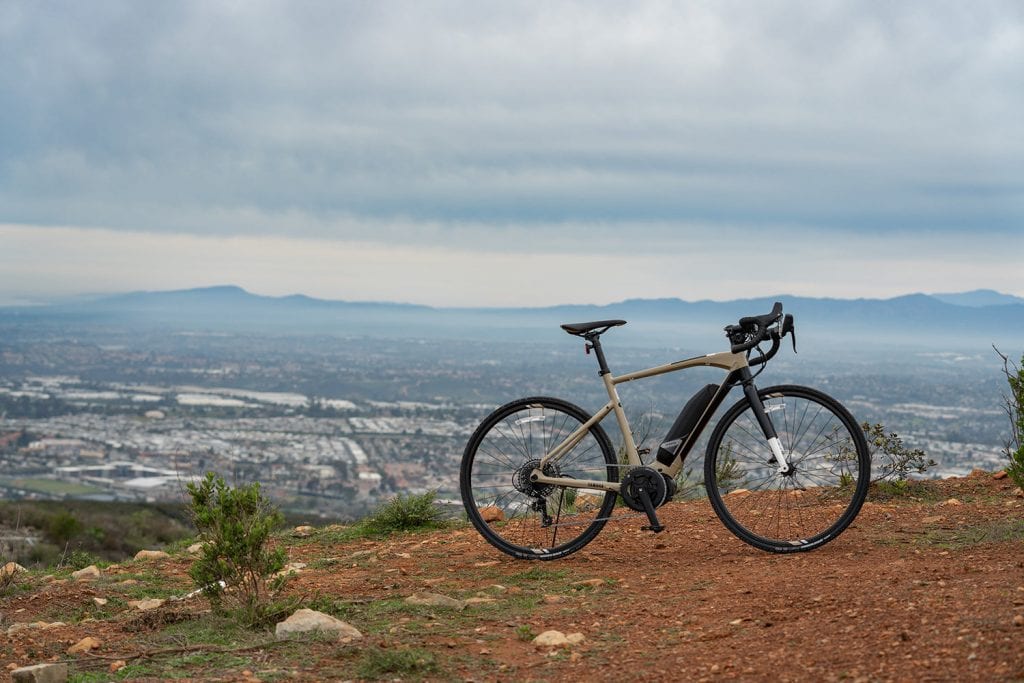 Fun fact: did you know that Yamaha is the pioneer in pedal-assist bicycling? That’s right, Yamaha has been producing pedal-assist commuter bicycles in Japan since 1993 and by 2016 had sold a whopping two million of them! Having been to Japan yearly to visit the All Japan National MX Championships, we can attest to the fact that Yamaha e-bikes are more common on city streets than any other. Last year, we took our first ride on a Yamaha-powered mountain bike, the Yamaha YDX Torc, and we were blown away by the torque and response of its PW-X motor that cranks out 80Nm of torque and 500 watts of power. The Yamaha PW-X motor is not exclusive to Yamaha as it has been used on Haibike and Giant e-bikes, too.
Fun fact: did you know that Yamaha is the pioneer in pedal-assist bicycling? That’s right, Yamaha has been producing pedal-assist commuter bicycles in Japan since 1993 and by 2016 had sold a whopping two million of them! Having been to Japan yearly to visit the All Japan National MX Championships, we can attest to the fact that Yamaha e-bikes are more common on city streets than any other. Last year, we took our first ride on a Yamaha-powered mountain bike, the Yamaha YDX Torc, and we were blown away by the torque and response of its PW-X motor that cranks out 80Nm of torque and 500 watts of power. The Yamaha PW-X motor is not exclusive to Yamaha as it has been used on Haibike and Giant e-bikes, too.
Last week, we were invited to the launch of an all-new model in the line of Yamaha power-assist bicycled: the Wabash Gravel Bicycle. What is a gravel bike? Gravel is a rapidly growing category of cycling that is also commonly referred to as” “adventure” or “cyclocross,” but a gravel bike is basically a road bike with more-relaxed frame geometry that is designed to tackle mild off-road sections, and equipped with wider, semi-knobby tires. For the non-cyclists reading this, it’s kind of like the bicycle version of a dual-sport motorcycle. Except cooler. Sure, you could ride a mountain bike on the road and the dirt, but they are far from efficient on pavement. And while a road bike rips on the tarmac, its tight frame geometry and skinny slick tires would be a hazard in the dirt. Thus, a gravel bike is the best of both worlds. Or well, the best compromise.
With the Wabash, Yamaha enters the pedal-assist gravel market, joining several other bike makers in the e-gravel category. While we are huge mountain bike enthusiasts here at SML, gravel riding is something we’ve only dabbled in here and there. Still, we were excited when we got the invite from Yamaha to join in on the fun at the Wabash press launch in San Marcos, California.

Where the road ends…this is where the Wabash shines as it can tackle a wide variety of terrain with ease.
“The gravel category is growing because of the performance and versatility built into these bikes, and Yamaha really keyed in on these areas for the new Wabash,” says Drew Engelmann, Yamaha’s Power Assist Bicycle group sales and marketing manager. “The Wabash is fun to ride, and it’s made for adventures right out of the garage no matter the terrain.”
The Wabash features an aluminum frame, flared-drop bars, a SRAM Apex 1×11 drivetrain with SRAM X-Sync chainrings, as well as SRAM Apex hydraulic disc brakes. To keep things rigid and precise under braking and in rough trail conditions, 12mm through-axles are found on both ends of the bike, and Maxxis Speed Terrane tires offer just enough grip on the dirt, without sacrificing too much efficiency on the road. At the heart of the Wabash is Yamaha’s PW Series SE motor, which is not as aggressive as the motor we’ve experienced in the past on the YDX Torc MTB. The PW Series SE motor also packs 500 watts of power, but is tuned with a less aggressive 70 Nm of torque. A smooth, natural assist is something Yamaha engineers pride themselves on when it comes to their power-assist motors and to be honest, we were curious to see how a pedal-assist bicycle with a completely rigid frame, drop bars and skinny tires would feel on the trail!
After the bike unveiling members of the media were fitted and debriefed on the features of the Wabash before we embarked on a 20-mile ride that included road sections, dirt fire roads, some singletrack, and even a few super-technical rocky stream crossings. The first thing that caught my attention were the flared drop bars. I suppose the wider drops are meant to offer more leverage on the bars when descending, but I personally have never felt comfortable enough in the drops to even think about descending off road holding on down there. I’ve been told that your braking power is greater in the drops because you have a better grasp at the levers, but I’ve always felt just fine up on the hoods, thank you. Still, the flared bars look cool and are easier on the back when you’re tucked in on the road. The second thing that caught my eye was the cockpit. The Wabash motor controller is mounted on a post that clamps onto the bottom of the stem. It’s easy to get to with your left thumb while holding the top of the bars, as is the small bell that is mounted on the right side. The power/speed/battery life display is mounted a little higher and in front of the stem, and its large digital display is easy to read, even while riding down a rough dirt trail.
As the group left the parking area, I couldn’t help myself and I immediately slammed the Wabash into full power mode. I mean let’s be honest…why would you want anything but max power, right? The Yamaha motor has four levels of assist, and I was only interested in BOOST! On the pavement, the motor had a very natural feel as it complemented the power that you put to the pedals. While some e-mtbs I’ve ridden have had a noticeable surge as soon as you hit the pedals, the Wabash had a smooth, predictable assist that would be easy for even the most inexperienced cyclists to control. After climbing a decent-sized hill on the street, we crested the top and descended a fast downhill. As we surpassed the motor’s 20 mph assist limit, the difference in feel between assist and no assist was not nearly as noticeable as it is on the e-mtbs we’ve ridden in the past that have an obvious cut off. In fact, the Wabash motor seems to have none of the rolling resistance that some bikes we’ve ridden had…we hit 51 mph on one of the hills we coasted down!
 When we got to the dirt, I was excited to see how the Wabash felt. A couple years ago, my tax return was burning a hole in my pocket so I went to Roy’s Cyclery to see what I could “invest” in. Though I was skeptical, I walked out with a Specialized Crux. My first couple of rides on the cyclocross bike left me wondering what the hell I had wasted my money on. But, that’s because I was taking it up and down my normal mountain bike trail and it was harder to climb on, far less comfortable, and scary to descend on. Finally, I woke up super early one morning and took it for a 12-hour ride. I covered 100 miles that day, connecting three of my favorite mountain biking areas together by the roads between them. It was one hell of an adventure, and it was far easier to accomplish on the cyclocross bike than it was on my regular mountain bike a couple months later. That’s when it all made sense…a cyclocross – or gravel, or adventure bike – is meant to do a variety of things all in one ride that no other specialty bike can.
When we got to the dirt, I was excited to see how the Wabash felt. A couple years ago, my tax return was burning a hole in my pocket so I went to Roy’s Cyclery to see what I could “invest” in. Though I was skeptical, I walked out with a Specialized Crux. My first couple of rides on the cyclocross bike left me wondering what the hell I had wasted my money on. But, that’s because I was taking it up and down my normal mountain bike trail and it was harder to climb on, far less comfortable, and scary to descend on. Finally, I woke up super early one morning and took it for a 12-hour ride. I covered 100 miles that day, connecting three of my favorite mountain biking areas together by the roads between them. It was one hell of an adventure, and it was far easier to accomplish on the cyclocross bike than it was on my regular mountain bike a couple months later. That’s when it all made sense…a cyclocross – or gravel, or adventure bike – is meant to do a variety of things all in one ride that no other specialty bike can.
But back to the Wabash! On the dirt, I was surprised to notice that due to the extra weight of the motor, the Wabash actually seemed to handle better than the CX bike I have at home. Instead of deflecting off of trail inconsistencies, it either plowed through them or the aluminum frame flexed and soaked them up. Not sure which…I was too busy having a good time to really analyze what was going on. The 35c Maxxis tires gripped the trail surface well and never caught me off guard. Make no mistake – you cannot attack the trail like you could on a mountain bike, but the Wabash honestly caught me off guard. Handling was quick, but not too quick, and the bike was reasonably confidence inspiring as we descended a tricky downhill that had a few rock drop offs and chunky sections. The only time I unclipped and took an embarrassing dab was in a stream that we negotiated for several hundred feet. Drew warned us that it was a “chundery” section ahead of time, but I was so busy thinking about how much I hate the fake cycling word, “chundery,” that I lost concentration as I pedaled downstream and took a dab in the deepest part of the water. (As best I know, that word is used to describe a rocky, loose section. Why not say, “rocky and loose?”) My left foot was soaked for the rest of the day, and all I could think about was the “chundery” conditions that caused my discomfort. Haha!
It wasn’t until we reached a super technical singletrack climb dubbed “Machu Picchu” that I discovered a purpose for the lower power settings on the motor. The section was only 230 feet long, but at an incline of 9%, only one foot wide, littered with softball-sized rocks (was this “chundery?”), and lined with foliage on both sides that often times required you to duck. At the start of the section, in full power mode, I ripped up the trail, bouncing off rocks and ducking beneath branches at a good clip. Then the left side of my handlebars clipped a good-sized shrub, locked the front brake, and sent me into a sideways endo that was only incomplete because the dense shrubs on the sides of the trail prevented me from doing a complete front flip. Getting started after that proved difficult with the bike in high, as the rear wheel would spin off the rocks and the bike would go nowhere. I had the best luck negotiating the trail in sections with the motor in ECO mode, but let’s be honest…I walked up most of that trail.
This was my first time riding with a SRAM road bike group, and though I was confused at first about the one-touch shifter lever, I grew to like it by the end of the ride. Instead of pushing on a small lever to upshift and the entire rear brake lever to downshift, the SRAM Apex shifters feature only one small lever. A soft touch (one click) shifts up, while a full push (two clicks) yields a downshift. This system is perfect for a pedal-assist bike as it allows only one or two downshifts at a time and thus preserves the rear derailleur and protects it against too many downshifts under power. Towards the end of our ride I experienced some wonky shifting in low gears, but I attribute that to the fact that the bikes were brand new and the cables were not yet broken in. The brakes, meanwhile, operated flawlessly and offered up just enough stopping power to bring the bike to a halt without being overly sensitive or too grabby. The overall layout of the Wabash was comfortable and at 5’9” I fit perfectly on the medium frame. The seated position was not too aggressive and at the end of our ride, nothing ached or hurt from poor body positioning.
One of the biggest misconceptions about pedal-assist bicycles is that they do all of the work for you, and you don’t get a workout while riding one. I wore a heart rate monitor throughout the ride and although my heart rate did not reach the same averages and maximums that it does on a conventional bike, the chart above is proof that you can still get a good workout on a pedal-assist bike.
At the end of the day, I decided that I had thoroughly enjoyed myself, had a blast on the Wabash, and gained a deeper fondness for gravel riding. So, is the Yamaha Wabash for you? If you need a bike for commuting that can also be used for a ton of fun on the weekends, I’d say yes! After riding 20 miles on the BOOST setting 95% of the time, I still had nearly 40% or so of the battery’s life left. That tells me that on more conservative settings, I’d have been able to squeeze a really long ride, oops, I mean adventure, out of the Wabash.
CLICK HERE for more on the Wabash!












